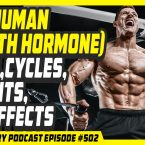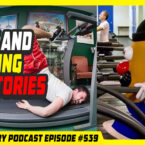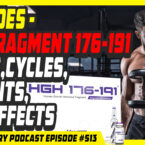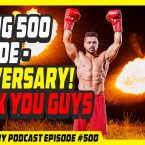Sign up to Get FREE Steroids, SARMS, Peptides eBooks
[sc:masthead-std]
[sc:salutation-std]
Most Major League Baseball stories have revolved around the players' use of steroids within the sport. But now, players are starting to use Human Growth Hormone and some of the places that they’re finding it may shock you.
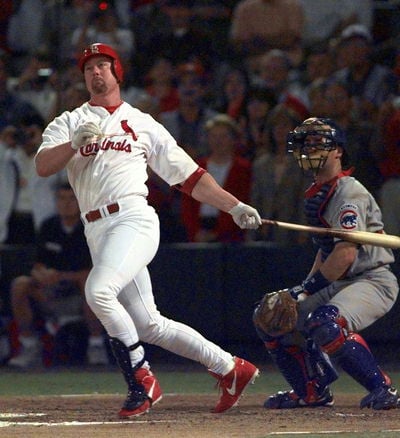
Everyone knows that the use of steroids is huge among the world of professional baseball players. And if you don’t believe me, then go back through a few of the major sports headlines over the past couple of years and you’ll find some of the biggest names that baseball has to offer. Barry Bonds, Rafael Palmeiro, and Jason Giambi are just a few of the names that have been channeled throughout the various news outlets across the world.
The stories haven’t been restricted to the news though as popular books have been spawned from this media circus as well. Jose Conseco couldn’t seem to make a major league roster yet was still able to jump back into baseball’s limelight after the release of his book “Juiced: Wild Times, Rampant 'Roids, Smash Hits, and How Baseball Got Big”. Reporters Lance Williams and Mark Fainaru-Wada also gained national fame after writing “The Book of Shadows”, which suggests that Barry Bonds used Deca and Winstrol during his record breaking home run season.
This is all old news to people though and no matter what testing develops, players are always going to use steroids and we will always hear about it. However, something that baseball hasn’t developed reliable testing for is Human Growth Hormone, which is precisely why we don’t ever hear much mentioned about it. They can’t catch anybody!
But what was once more of a theory only voiced through rumors and whispers turned into a full fledged reality when Arizona Diamondbacks pitcher Jason Grimsley admitted to the use of amphetamines, steroids, and especially Human Growth Hormone. Grimsley, a long-time journeyman relief pitcher has been investigated by law enforcement agents in regards to his use and has been questioned on more than one occasion about other players who’ve used HGH.
Grimsley became a target after failing a drug test in 2003 and authorities had been monitoring his activity ever since. At one point this year, they intercepted a package sent to him that contained a season’s supply of Human Growth Hormone. Grimsley was then issued a couple of options: work with law enforcement or face a tougher set of consequences. Grimsley chose option number one after being threatened with a search of his home and proceeded to blow the top of baseball’s widespread HGH use.
And what he said is definitely shocking to say the least. Grimsley told authorities of his amphetamine and steroid usage before ending the questioning by explaining how he switched to Human Growth Hormone use exclusively due to the absent testing factor. He also ratted out some other players who both used and supplied drugs, although their names weren’t given in court documents.
The first thing that Grimsley explained is how amphetamines get passed around the league and why they’re used. Amphetamines are taken by players because they increase alertness, awareness, and physical energy. Grimsley said that a major source of the amphetamines around the league are the Latin players and those on California teams since they have a short drive to Mexico to pick up the drugs. He went as far as to mention how the amphetamines are placed in coffee pots marked “leaded” and “unleaded” to indicate which pots had the drug in them.
Another very surprising thing that Jason Grimsley revealed is that a major source of Human Growth Hormone among baseball players is anti-aging clinics. Many elderly people use HGH to reverse the aging process, although this use is not approved by the FDA. But the elderly, as well as baseball players are able to get the drug through the cover of “off-label” use.
Many were not only unaware that HGH is so common among baseball players but also puzzled as to how a pitcher would benefit from its use. After all, the stereotypical baseball player who uses performance enhancers is the 40+ home run cleanup batter who gains the obvious benefit of added power to his swing from the drugs. So what does a pitcher gain from going to the trouble of convincing anti-aging clinics or teammates to give them the HGH that they need? Remember, they rarely get to bat.
The answer may prove that pitchers need the drug even more so as Philadelphia Phillies pitcher Cory Lidle shed some light on the situation. Lidle said, “I talked to a pitcher who did it. He said that it definitely helped him. It makes you throw harder. It makes you rebound quicker.” Lidle’s comments were backed up by the statistic that 6 out of the 12 players nabbed for steroid use last year were pitchers.
There may be some pitchers who will think twice about using HGH though after seeing Jason Grimsley’s punishment for his usage of the drug. If Grimsley plans to remain in the major leagues, he’ll have to wait a total of 50 games before he’s reinstated for play again. This is if he doesn’t retire as the reliever with a 4.88 ERA is 38 years old and will have to struggle to stay in the league anyways due to his aging arm.
Most people believe the opposite to be true though in regards to Grimsley’s punishment acting as a deterrent and simply believe that the number of people using the drug will increase rather than decrease. Somewhat like the Jose Conseco effect with steroids. Some even think that HGH use will trickle down into the college, and even more alarming, the high school level.
Gary Wadler of the American College of Sports American is definitely one of these people. Wadler said, “We were all concerned about steroid use in schools. Now we're concerned with HGH use trickling down to high schools because they're role modeling off these sports figures.”How high school kids will be able to afford the stuff was never explained.
Rob Davini, the executive director of the National High School Baseball Association and a longtime high school coach, thinks that it’s even harder to tell if a high school kid is using HGH mentioning, “On the high school level kids are getting bigger and stronger, but I can't tell if that's to do with HGH or if they're just going through a growth spurt.” He went on to add that, “Everyone wanted to put it (HGH use) under the carpet, and now we've got to face the issue.”
Teen use of Human Growth Hormone is very alarming because their bodies are still producing lots of it naturally. If a high schooler doesn’t need extra HGH, their growth may even be stunted due to an overproduction of HGH. While the drug can most definitely be beneficial to anyone like Jason Grimsley, who’s body most likely produces very little HGH, it’s unsafe for a sophomore or junior in high school.
We certainly don’t want to see any young people lose size and strength because of an uninformed decision like that of premature Human Growth Hormone use. But on the same token, HGH is a very valuable commodity for aging professional sports players like Jason Grimsley who need a boost to stay at the top of their game. It’s one of the few substances that can’t be traced through urine as well.
So while we all need to hope that teenagers can be armed with the knowledge to wait till later on in their lives to take up the use of Human Growth Hormone, we also need to hope that, for the sake of professional athletes, there never is a reliable test developed for HGH.

